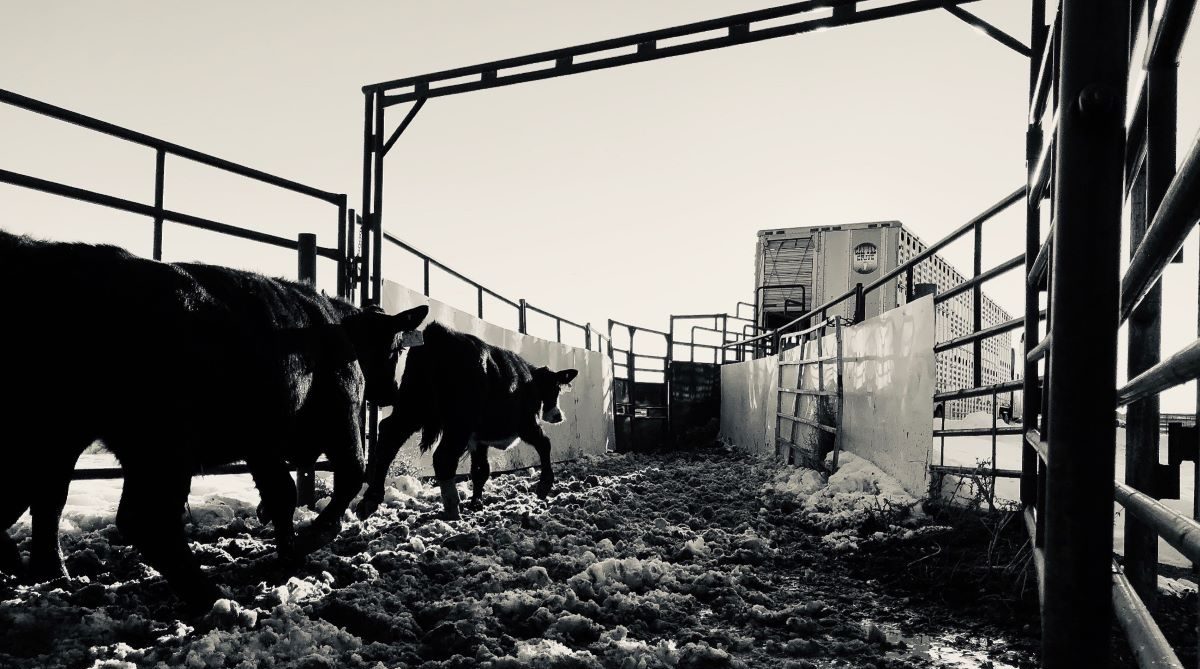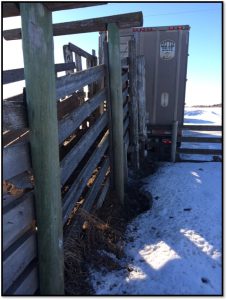AB Direct - Steers
Rail: 495.00-500.00
AB Direct - Heifers
Rail: 495.00-500.00
US Trade- Steers
Rail: 370.00-372.00 (NE/IA) Thursday
US Trade - Heifers
Rail: 370.00-372.00 (NE/IA) Thursday
Canadian Dollar
0.14

ABP Research Showcase Highlights | Getting the science on rest stops
This is the second in a series of articles highlighting a selection of ABP-supported research projects that were featured at our Research Showcase in February 2023. Find the first article here.
In 2017, the Canadian Food Inspection Agency (CFIA) announced new livestock transport regulations were coming, prompting criticism that became a common refrain: the new rules weren’t based in science.
The new transport regulations for ruminants, which went into effect in 2020, allowed for a maximum of 36 hours in transit, down from 48 hours, with a required eight-hour minimum feed, water, and rest break after 36 hours.
Karen Schwartzkopf-Genswein, Senior Research Scientist with Agriculture and Agri-Food Canada (AAFC), agreed that the new regulations weren’t grounded in science on animal care.

“You need to have these regulations be science informed and science based, and I didn’t really see that in regard to the rest stops that they had selected,” said Schwartzkopf-Genswein at Alberta Beef Producers’ Research Showcase in February.
In response, Schwartzkopf-Genswein and fellow AAFC researcher Daniela Meléndez conducted a series of studies on the effect of rest stop duration and quality during transport of weaned calves.
This project, funded by AAFC, the Beef Cattle Research Council, ABP, and others, consisted of three different experiments, all of which have been published in peer-reviewed journals.

Each experiment used newly weaned Angus-cross calves sourced from one local ranch. During the transport portion of the experiments, the behaviour of the animals was recorded, which included standing in line (an indicator of fatigue), calf attitude, and gait score during unloading. Shrink weight after each unloading was also measured.
After transportation, calves were monitored for 28 days at AAFC’s Lethbridge Research and Development Centre, where average daily gain, feed intake, and rectal temperature were recorded. Blood samples were taken to track indicators of feed deprivation, muscle damage, stress, immune function, and dehydration.
Continues below video.
Experiment One
Upon arrival at the research centre, the calves received the standard feedlot induction protocol before staying in feedlot pens for a few weeks so their initial transport wouldn’t impact the experiment.
The first experiment compared the effect of no rest, four hours of rest, eight hours of rest, and 12 hours of rest on weaned calves after either 12 or 36 hours in transit. There were eight treatment groups, and the research centre was used as the rest stop location for unloading and sampling.
The results of this trial were unexpected, Schwartzkopf-Genswein stated. “The biggest take-home from this study was that calves benefited from a shorter transport duration,” she said. The calves transported for 36 hours had lower dry matter intake, average daily gain, and body weight, as well as greater indicators of stress and feed deprivation.
The only area where rest made an impact was in the calves’ non-esterified fatty acid, or NEFA, concentrations, which indicates fat mobilization due to feed deprivation.
“The 36-hour group that was given no rest had a greater NEFA concentrations than those that were rested for four and eight hours,” she explained. “We had no other consistent effect of rest on welfare, so the rest did not reduce indicators of fatigue, dehydration, stress, or immune function.”
When Schwartzkopf-Genswein and her team analyzed the experiment’s design, they realized they had essentially preconditioned the calves prior to the study, so the next trial would have to take this into account.

Experiment Two
With this new insight, the second experiment looked at the effect of no rest or eight hours of rest on conditioned versus non-conditioned calves. It also considered whether the calves came to the research centre directly from the ranch or went through an auction market first. To achieve the latter, the researchers ran calves through the ring at nearby Balog Auctions after sales were done for the day, so they weren’t co-mingled and were given both feed and water, which may have affected the results.
“We really had very few places where we saw treatment differences, and if we did, they were inconsistent,” said Schwartzkopf-Genswein.
“One of the only places we saw an effect (of rest) here was during transport. We actually monitored how much they lie down and stood, and in that last four-hour transport, at hour three, 20 per cent more of the eight-hour (rest) calves were standing than the zero (rest) calves. But by the fourth hour…we didn’t see that same effect.”
No other differences due to rest were seen, but the impact of conditioning was observed in the calves’ weights throughout the study and in other factors.
“Non-conditioned calves by and large had the greatest physiological and behavioral indicators of reduced welfare compared to the conditioned calves,” she explained. “Overall, the effect that we saw in this study was due to the conditioning and not the rest.”
Experiment Three

Prior to the third experiment, CFIA suggested that the calves in the study thus far weren’t being transported long enough after their rests to allow for any differences to occur. The researchers agreed and added another treatment to their third trial: after an initial transport of 20 hours, conditioned and non-conditioned calves would receive either no rest or eight hours of rest before travelling for another four or 15 hours.
Once again, most differences seen in the calves were the result of conditioning. “Eighty-three per cent of the differences we’ve got were due to the transport effect, while only 17 were due to the rest effect itself,” said Schwartzkopf-Genswein.
“We can see that the rest didn’t really improve the welfare of the calves transported for the longer period of time after the rest…We saw clear differences between animals conditioned and not. That was the biggest difference in the study overall.”
Main Findings
Due to consistent results across the three experiments, the researchers have greater confidence in their findings, Schwartzkopf-Genswein noted.
“Overall, the rest did not improve or reduce welfare indicators in those calves transported short or long periods of time before or after the rest,” she said. “We can say that we believe that the stress caused by transport is less than weaning stress.”
As well, conditioned calves fared better in transit than non-conditioned calves, and the less time in transit prior to a rest, the better. Whether the calves came directly from the ranch or through an auction market made little impact, but that may be due to how the experiment was conducted.
CFIA has consulted the researchers several times about these results. “At this point, the regulations will not change…but the policy around those regulations can be modified,” said Schwartzkopf-Genswein.
“That’s probably the key piece where these studies will have impact in terms of softening the regulations or at least modifying those regulations to be more consistent with what the science is saying.”
She added that these findings are specific to newly weaned calves, and the effect of rest stop duration and quality will differ depending on the type of animal.
“We have been thinking about what effect this has on cull cows and where those lines should sit relative to what the regulations say,” she said.
“Again, let’s base it on science, and let’s base it on what’s good for the animal.”
This study was partially funded by Alberta Beef Producers. To learn about more ABP-supported studies and find fact sheets for completed and in-progress projects, visit our Research and Development webpage.

